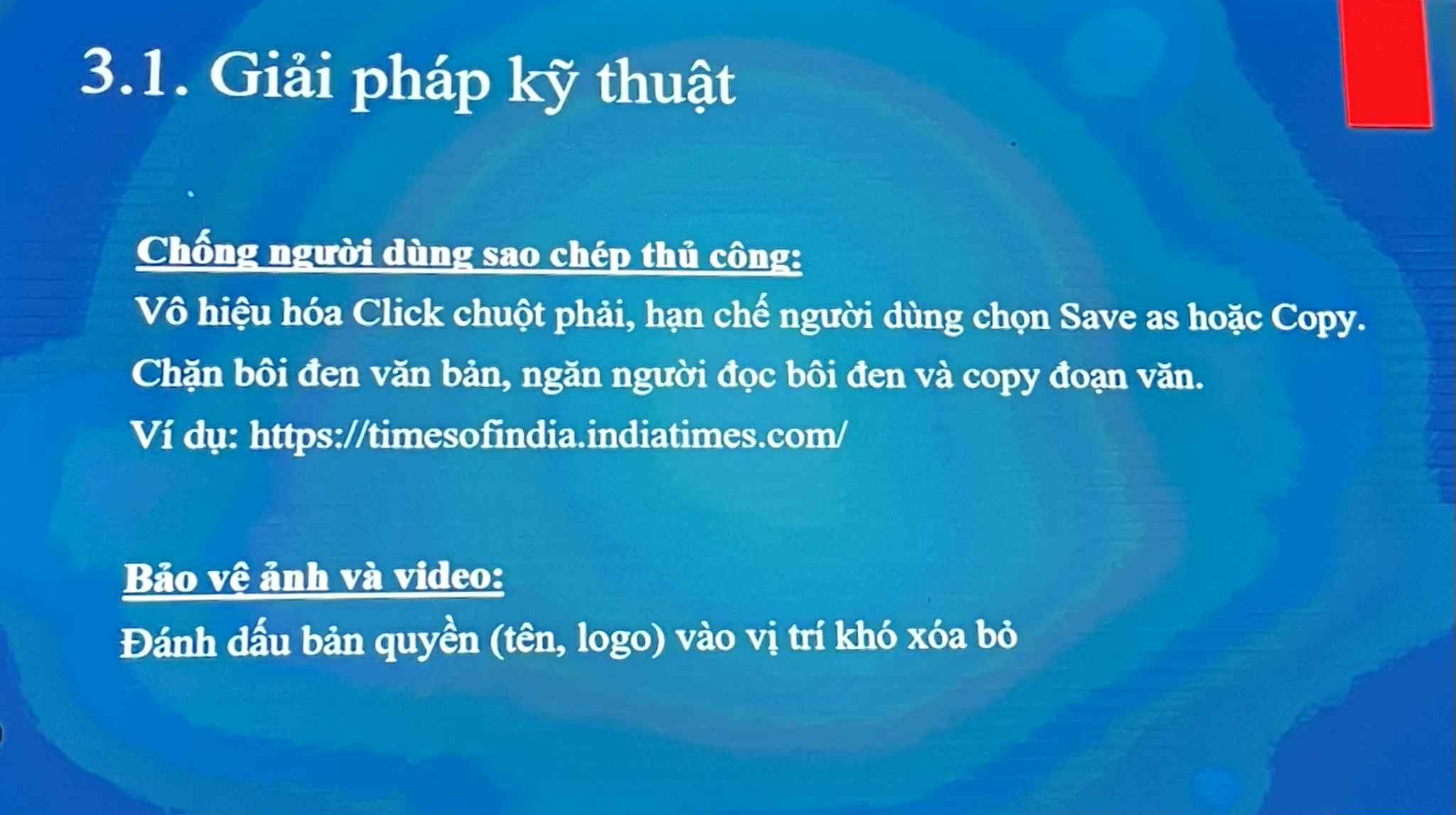At the training course on effective digital transformation models for journalism organized by the Press Department on the morning of November 25, Dr. Mach Le Thu - lecturer at the Institute of Politics and International Relations (Ho Chi Minh National Academy of Politics), presented a topic on copyright protection and anti-plagiarism in the digital press environment.
The current situation of digital press copyright violations
According to Dr. Mach Le Thu, copyright infringement in Vietnam occurs in many forms, from original copying, edited copying to multimedia copyright infringement or rebroadcasting of television programs without permission. The main reason comes from the pressure of racing news and views, causing a part of journalists to depend on content copy instead of self-producing.
The strong development of generative AI models, which collect available data to create new content, also increases the situation of plagiarism in more sophisticated forms. In addition, the fact that many violating sites have servers located abroad makes the handling process complicated and expensive.
The lecturer also warned about the serious consequences that copyright infringement causes for the press industry, from loss of revenue, reduced creative motivation to decline in the reputation of press agencies and distorting the competitive environment.
In that context, both Vietnamese and international laws have built a system of regulations to protect copyright and respect intellectual property rights in the field of journalism. Current legal documents clearly require reuse of content, including the obligation to ask for permission, record sources and comply with regulations on copyright and related rights.

Solutions to protect press copyright in the AI era
In the solution section, Dr. Mach Le Thu emphasized the need to simultaneously deploy technical measures, management processes and content strategies. Technically, editors can apply anti-copying mechanisms such as blocking text emulation, disabling right-wing clicks or limiting unauthorized downloads.
For photos and videos, attaching watermarks in unable to be deleted locations helps limit illegal reuse. In particular, to deal with AI models, experts propose using hidden text techniques by inserting text with colors that match the background, helping to mark copyrights while readers cannot see them.
Regarding the process, press agencies need to build a system of clear copyright provisions right on their platform, specifically stating the strict prohibition of using content for AI training or copying - distributing without written approval. At the same time, it is necessary to establish a process for reporting violations to digital platforms and sending warning letters to request the removal of violating content.
From a content perspective, Dr. Mach Le Thu believes that the fee collection model is a direction to help reduce copying and increase the value of press products. In addition, copyright agreements between the press and technology companies are also increasingly popular. This model is expected to become a trend, helping the press protect rights in the context of rapid development of AI.
The topic ended with a discussion session with many questions about how to build a content protection strategy in the context of constantly changing digital platforms. According to Dr. Mach Le Thu, only by synchronously combining technology, law and content management, can newsrooms proactively protect intellectual property and maintain sustainable competitiveness in the digital press environment.











